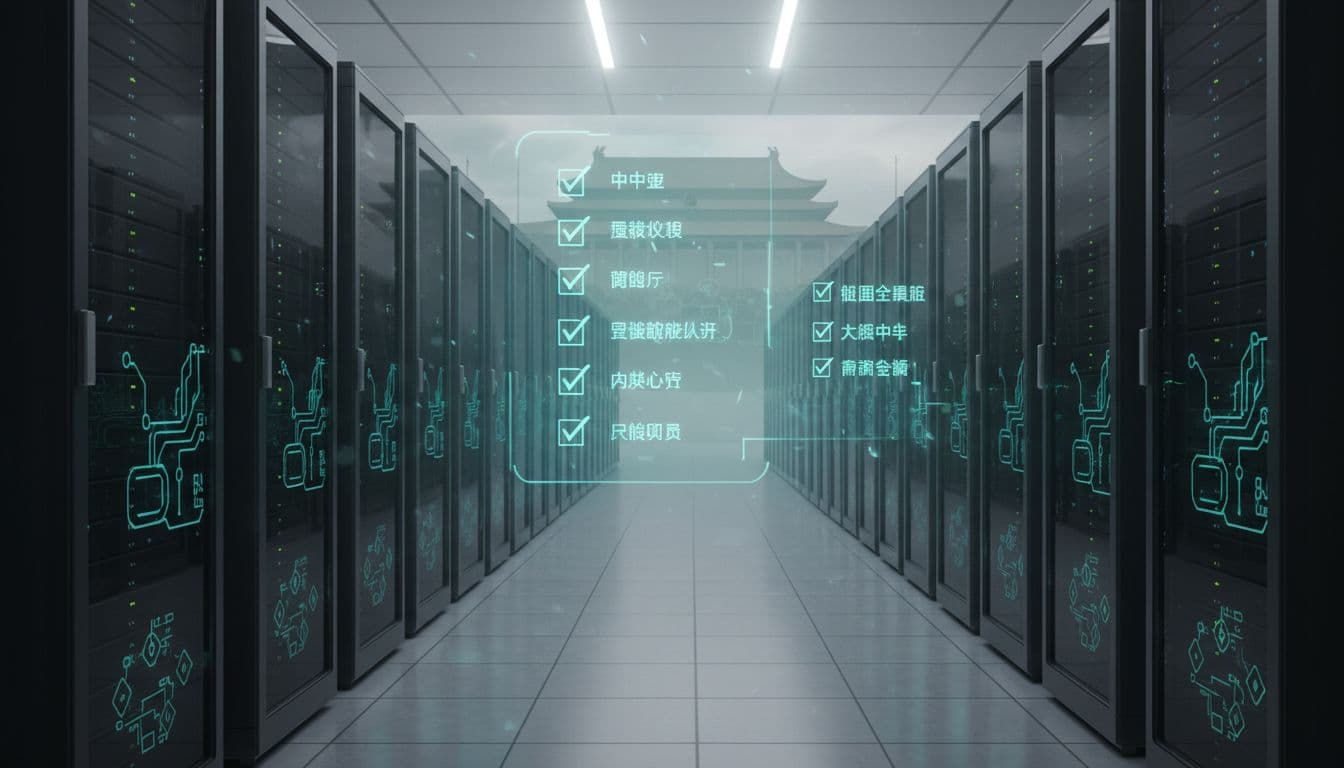China has reportedly barred state-funded data centers from using foreign AI chips. If confirmed and enforced widely, this policy would push government-backed compute away from U.S. suppliers and toward domestic alternatives. It adds to the ongoing decoupling in advanced semiconductors, complicates hyperscale planning in China, and could reshape AI buildouts for years.
The Headline, In Plain Terms
- State-funded or subsidized data centers in China are said to be restricted from using foreign AI chips.
- This most directly affects high-performance accelerators from U.S. vendors often used to train and serve large AI models.
- Domestic providers stand to benefit, though performance and software ecosystem gaps remain a challenge.
Why This Matters
AI progress hinges on access to compute. Training frontier models and serving them at scale requires high-end accelerators, low-latency networks, and significant power. If state-funded Chinese data centers can no longer deploy foreign accelerators, they will need local chips, software stacks, and supply chains to reach similar performance. That shift has three immediate effects:
- Procurement changes: Government-backed projects may re-bid or re-scope around approved domestic hardware.
- Ecosystem pressure: Domestic vendors will need to mature compilers, frameworks, and cluster orchestration to close the gap.
- Global ripples: U.S. suppliers could face lower sales into China on state projects, while other regions may see improved availability.

Context: Export Controls and Tech Decoupling
Over the past two years, export controls have limited the most advanced AI chips that U.S. companies can sell into China. Workarounds led to “China-specific” accelerators, but performance caps kept shifting. A domestic-first policy on state-funded projects is a logical next step for China to reduce dependency, ensure supply predictability, and spur local industry.
For global AI builders, this deepens the split between technology stacks used in China and those used elsewhere. Software portability, framework support, and model performance may diverge more as different accelerators gain share in different markets.
Winners and Losers (Likely)
- Potential winners: Chinese chipmakers and AI system integrators; domestic cloud providers aligned with local accelerators; software companies optimizing frameworks for local hardware.
- Potential pressured: Foreign accelerator vendors counting on Chinese state projects; vendors of networking and storage tuned for foreign accelerators; cloud outfits in China that built around foreign GPUs.

Implications for AI Roadmaps
If you operate or sell AI products in China, plan for hardware-specific paths:
- Model portability: Ensure your models run efficiently on domestic accelerators; test kernels, precision modes, and memory footprints.
- Framework readiness: Validate PyTorch/TensorFlow forks, compilers, and graph optimizers for the target stack.
- Serving strategy: Evaluate inference performance on domestic chips; consider quantization and distillation to hit latency targets.
- Networking: Recheck cluster fabric and collective ops support; all-reduce efficiency can make or break training throughput.
- Compliance: Keep documentation on hardware provenance, subsidies, and funding sources to prove eligibility.
What Investors Should Watch
- Guidance changes: Look for commentary from foreign chip suppliers on China exposure and demand shifts to other regions.
- Domestic chip cadence: Roadmaps from local accelerator vendors, plus software ecosystem milestones and benchmark disclosures.
- Capex patterns: Announcements of new data center campuses and power allocations tied to domestic silicon.
- Software partners: Deals between domestic chipmakers and major AI developers to optimize training stacks.

What This Means for Creators and Businesses
For content creators and SaaS teams working across regions, the main takeaway is fragmentation:
- Document variants: Maintain build and deployment profiles per hardware target.
- Latency testing: Measure regional performance after hardware swaps; update SLAs if needed.
- Pricing plans: If capacity or performance changes, revise cost models and communicate clearly with customers.
- Content opportunities: Publish explainers on domestic accelerators, how they compare, and what users can expect.
SEO Takeaways
- Keywords: “China bans foreign AI chips,” “state-funded data centers China,” “domestic AI accelerators China,” “AI chip supply chain decoupling.”
- Snippets: Create a short FAQ answering “What did China ban?” “Who is affected?” “What chips are impacted?”
- Internal links: Connect to your semiconductor policy explainer, export controls timeline, and AI hardware guides.
- Freshness: Update as official documents, clarifications, or exemptions are published.
Risks and Unknowns
Details matter. We need clarity on the exact definition of “state-funded,” the enforcement timeline, any grace periods, and whether mixed deployments are allowed. There are also technical questions around performance trade-offs, developer tooling maturity, and availability at scale for domestic accelerators. Expect iterative guidance and phased compliance.
If the reported policy holds, China’s state-backed AI compute will move further from foreign suppliers and toward domestic ecosystems. That will accelerate parallel development tracks in AI hardware and software. For global teams, prepare for a more fragmented environment, with different performance profiles, costs, and compliance needs by region.
To contact us click Here .

